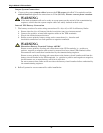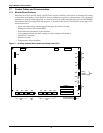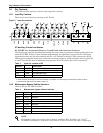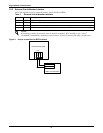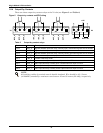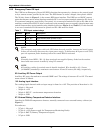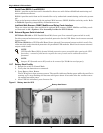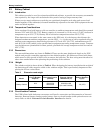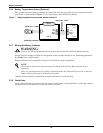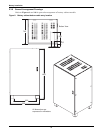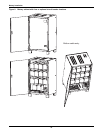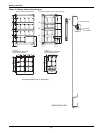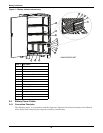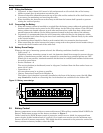
Battery Installation
18
2.2 Safety
Special care should be taken when working with the batteries associated with the Liebert NX UPS
system. When all the cells are connected together, the battery terminal voltage is potentially hazard-
ous. The battery installation must be segregated from all but appropriately qualified maintenance
personnel by locating the cells in a key-lockable cabinet or in a purpose-designed, dedicated battery
room. When the batteries require maintenance, these precautions must be taken:
• The rotary switch must be turned to Maint. position.
• The input circuit breaker (CB1) must be opened.
• The ANDERSON connector must be disconnected..
NOTE
The fuse on the battery EMI board (UHA241A2-10kkVA, UHK241A2-15/20kVA,
UHS242A2-30kVA) is 600VDC/30A, High Speed Fuse.
NOTE
Full safety instructions concerning the use and maintenance of UPS batteries are provided in
the appropriate battery manufacturers manuals. The battery safety information contained in
this section relates to key considerations that must be taken into account during the
installation design process and might affect the design outcome depending on localised
conditions.
!
WARNING
Hazardous battery voltage present behind covers
No user-serviceable parts are located behind covers that require a tool for their removal. Only
qualified service personnel are authorised to remove such covers.
When using internal batteries in 10 to 30kVA units, the batteries are always connected
through power fuses to the UPS and to the segregated terminal bars available for connection
to an external battery.
Isolate any internal battery connections before attempting to access the segregated terminal
bars available for connection to an external battery.
The following general battery safety precautions and warnings should be observed at all
times:
• A battery can present risk of electric shock or burn from high- short-circuit currents.
• The full nominal string voltage, when the battery blocks are interconnected, is 480VDC,
which is hazardous
• Only qualified personnel should install or service batteries.
• Eye protection should be worn to prevent injury from electrical arcs.
• Remove rings, watches, necklaces, bracelets and all other metal objects.
• Use only tools with insulated handles.
• Wear rubber gloves and a rubber apron when handling batteries.
• If a battery leaks electrolyte or is otherwise damaged, it should be placed in a container
resistant to sulfuric acid and disposed of in accordance with local regulations.
• If electrolyte comes into contact with the skin the affected area should be washed immedi-
ately with plenty of clean water.
• Batteries must always be disposed of according to local environmental laws.
• When replacing batteries, use the same number and type that were originally fitted.
• Disconnect charging source before connecting or disconnecting battery terminals.
• Determine whether the battery is inadvertently grounded. If it is inadvertently grounded,
remove the source of the ground. Contact with any part of a grounded battery can result in
electrical shock.



